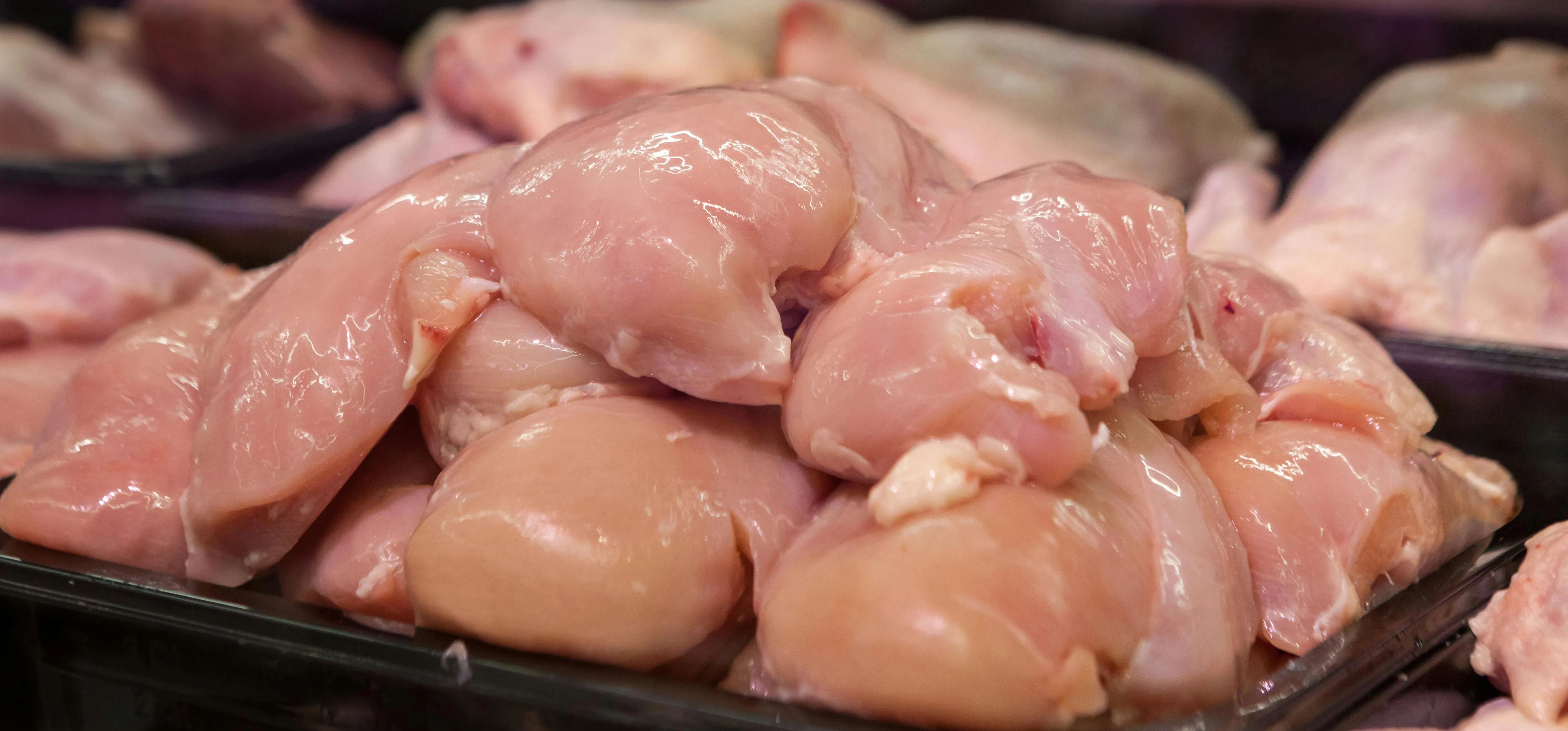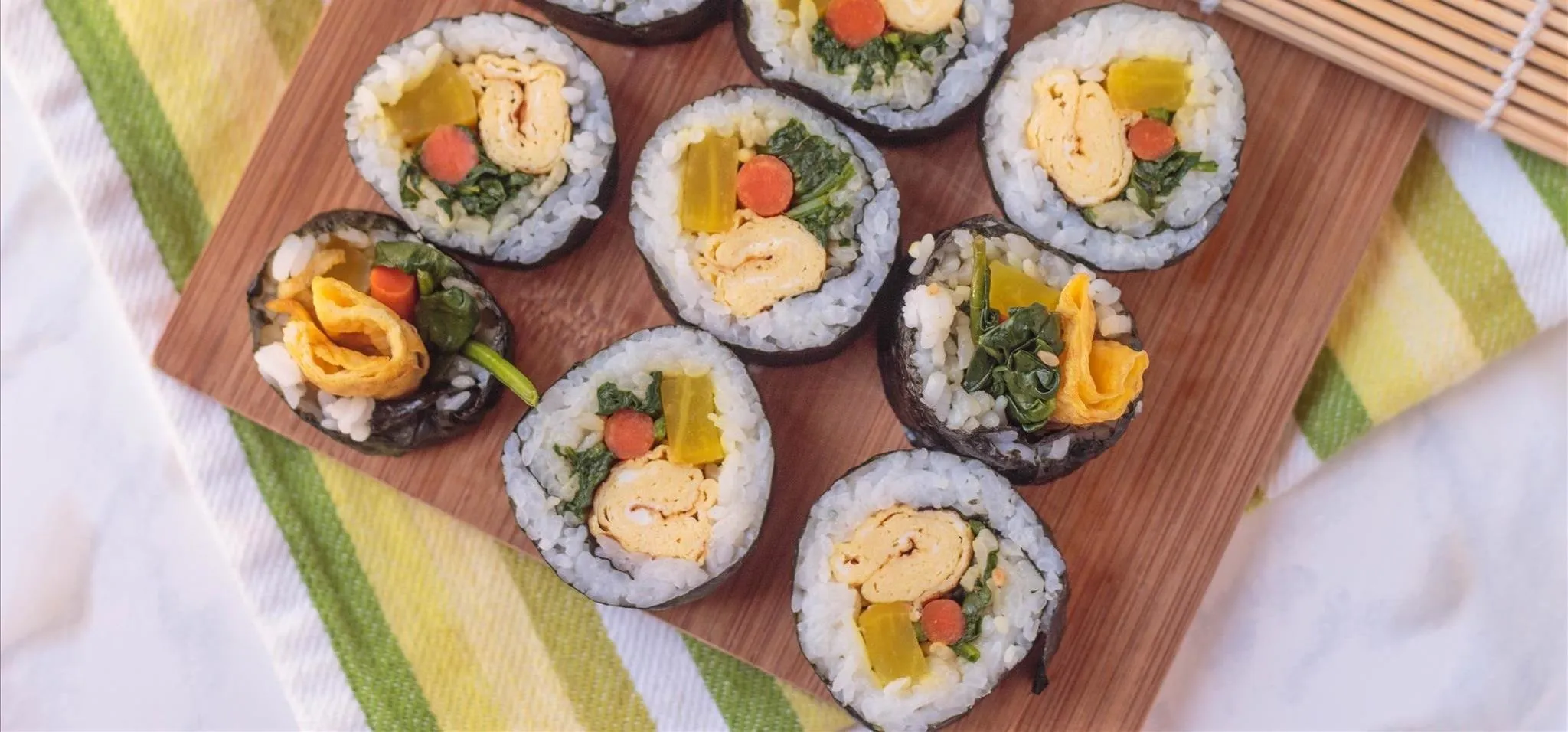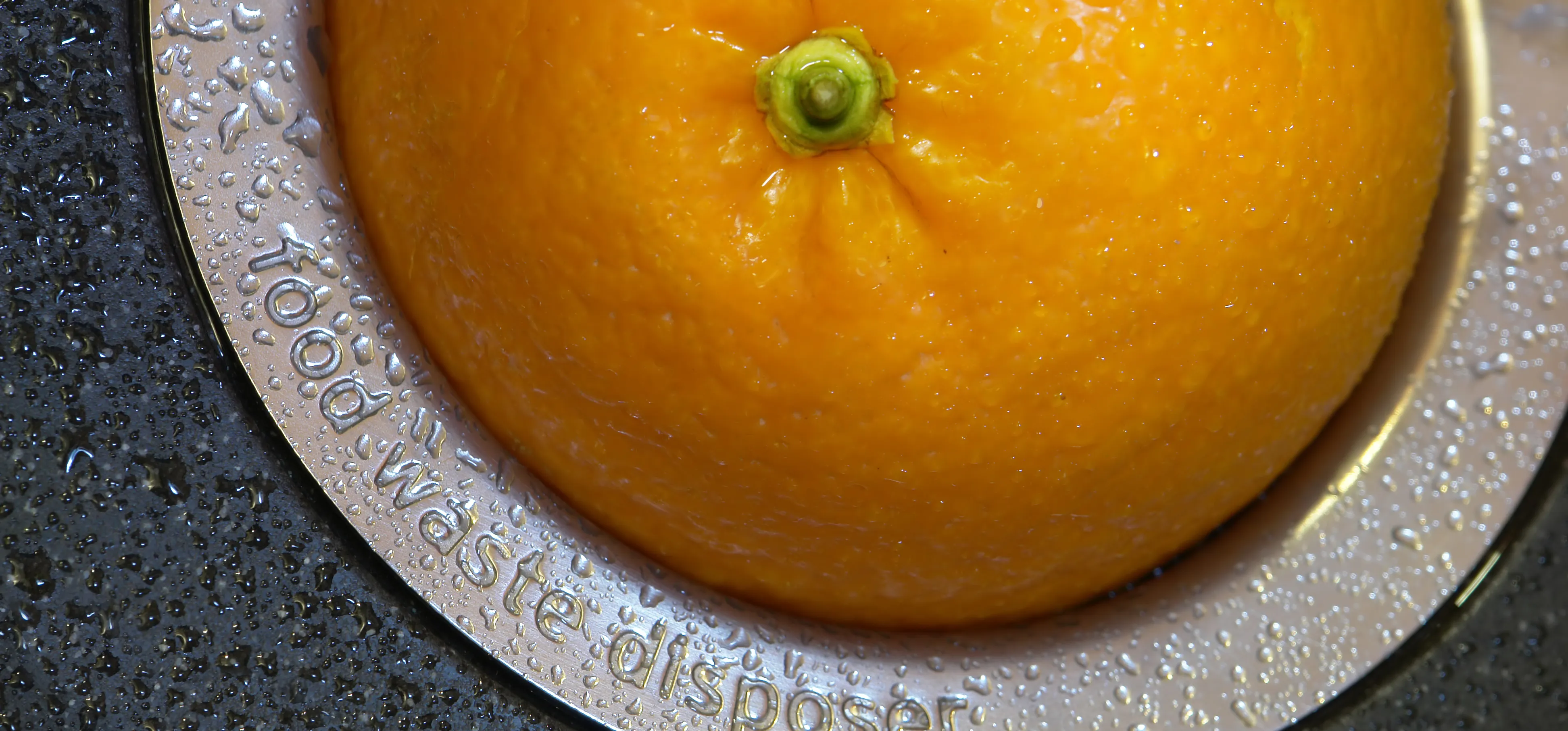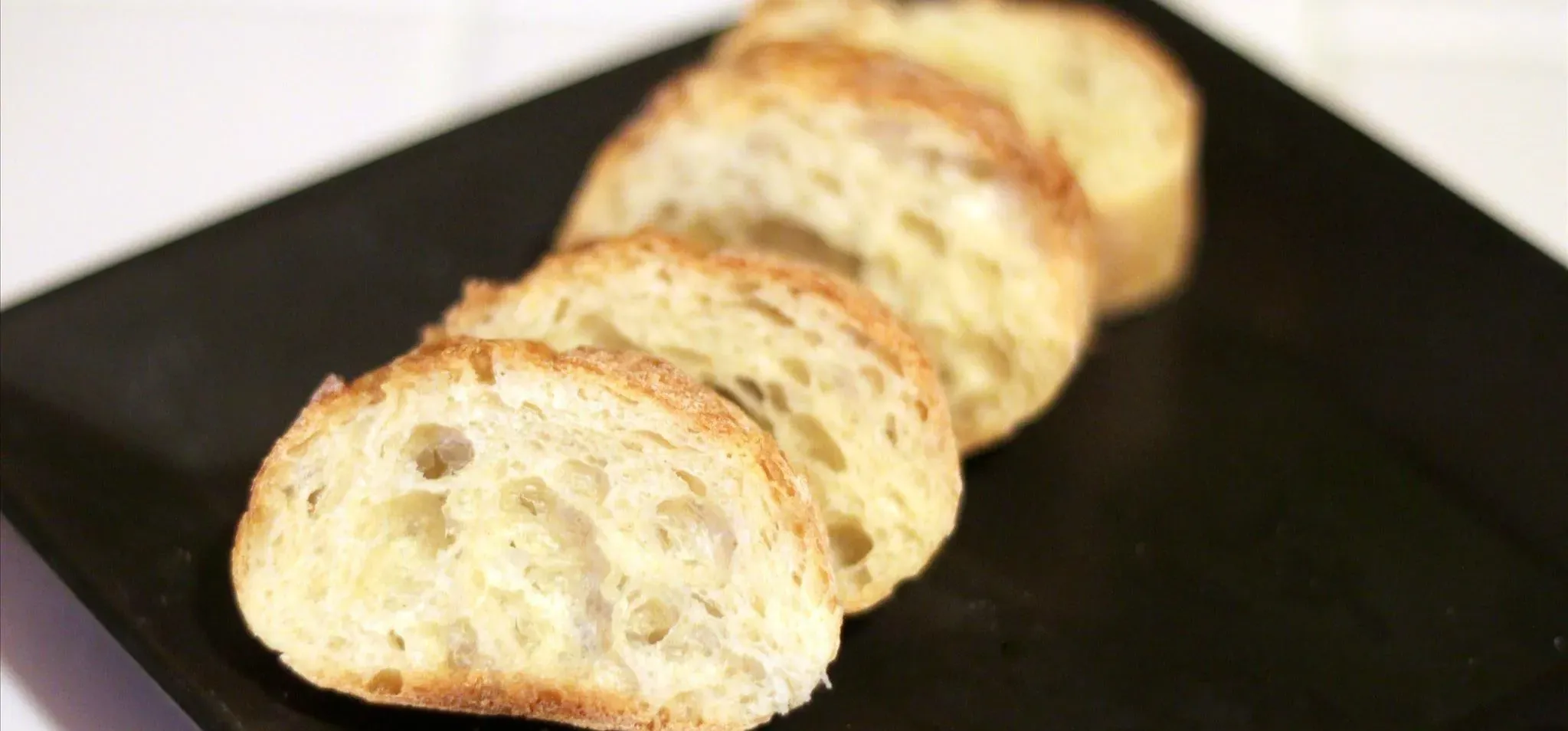The way in which cooking can be used to both illustrate science and create a beautiful bite of food is fascinating to me. And emulsions, the results of combining liquid fat and water, are a fantastic example of science in harmony with great cooking.
In layman's terms, an emulsion is the suspension (or physical combining) of two liquids that don't normally mix. Think about a simple vinaigrette, a mixture of oil and vinegar. If you pour the oil into the vinegar mixture and stir to combine it, nothing happens.
That's where the vigorous whisking comes in handy. When you stream oil slowly into the mixture and then violently beat it, you are breaking the oil molecules into tiny particles and suspending them. That's an emulsion. Technically it's a water in oil emulsion, and you can learn more about the specific science of it here.
- Don't Miss: Whisking: We're All Doing It Wrong
With the power of force, you've temporarily willed your liquids into submission. However, the oil and vinegar mixture will eventually separate into their separate entities because there is nothing binding them together chemically.
Let's Talk Emulsifiers
If you want to bind the liquids together more permanently, you need the help of an emulsifer. Emulsifiers keep your vinaigrette from separating, your mayonnaise from deflating, and your sauce from breaking... which makes them essential knowledge for the home cook. (For instance, if you love eggs Benedict as much as I do... then you've already supped on a delicious emulsified sauce: Hollandaise!)
Emulsifiers work to chemically bind oil and water because they are made of molecules that contain both a lipid (fat)-friendly and water-friendly end. The oil binds to the fat-friendly end of the emulsifier and the water to the water-friendly end with the help of constant force, or whisking. This blend of both fat and water creates a silky, velvety texture that is heaven on earth... but only if you're careful about constant motion and temperature when mixing the ingredients together. Emulsions are tricky, but well worth the effort.
I'll be addressing natural emulsifiers today, such as mustard and egg yolk, but semi-synthetic emulsifiers also exist; these have been processed from natural materials and are usually much less prone to bacterial growth or to breaking.
The Binding Power of Mustard & Honey
As mentioned earlier, mustard is a common emulsifier. It contains a good amount of mucilage, a gelatinous substance that occurs naturally in plants. This is why mustard is a common ingredient in vinaigrettes.
Honey is another emulsifier, and it's my favorite ingredient for salad dressings. This recipe for cherry balsamic vinaigrette is a versatile one that can also be used as a marinade.
If cherries are not your thing, here is a recipe for raspberry honey vinaigrette that pairs well with chicken and greens.
An Eggcellent Emulsifier
Another common emulsifier is an ingredient found in egg yolks called casein. It's what binds with oil to make mayonnaise, an easy condiment to make at home. I like to use a bit of Dijon mustard in my recipe, turning it into homemade Dijonnaise.
- Don't Miss: Keep Your Bowl from Slipping When Emulsifying

Homemade Dijonnaise
Ingredients:
- 1 large egg yolk
- 1 ½ tsp. fresh lemon juice
- 1 tsp. white wine vinegar
- ¼ tsp. plus 1 tsp. Dijon mustard
- ½ tsp. salt plus more to taste
- 3/4 cup canola oil
Directions:
- Combine egg yolk, lemon juice, vinegar, mustard, and salt in medium bowl. Whisk vigorously for 30 seconds.
- Add half the oil to the yolk mixture, a few drops at a time, constantly whisking, for about 5 minutes.
- Gradually add the rest of the oil in a slow, thin stream, whisking constantly, until the mayonnaise is thick, about 8 minutes. Keep chilled.
Butter Does Make It Better
Butter contains lecithin, another well-recognized emulsifier that's found naturally in plants and animals. In beurre blanc, the lecithin from the butter binds with white wine and white vinegar to make this delicious French sauce that goes well with seafood and chicken.

The traditional recipe for beurre blanc contains no cream. But any chef will tell you that adding a bit of it helps further the binding process and prevents the sauce from breaking so easily, as milk proteins also contain lecithin. If you'd like to try both techniques, here is Julia Child's recipe, which doesn't use cream. And below is my recipe for grapefruit beurre blanc, a citrusy twist on the traditional recipe that does contain cream.

Grapefruit Beurre Blanc
Ingredients:
- 1 red grapefruit
- ¼ cup dry white wine
- 1 shallot, minced
- 2 tablespoons white wine vinegar
- 1 Tbsp. heavy cream
- 1¼ sticks (½ cup plus 2 Tbsp.) of cold unsalted butter, cut into tablespoon pieces
Directions:
- Strain the juice from your grapefruit to measure ½ cup.
- Boil the juice, wine, minced shallot, and vinegar in a small heavy saucepan until reduced to about 1 Tbsp.
- Whisk in cream and reduce heat to low.
- Whisk in butter one piece at a time, lifting the pan from heat and adding each new piece of butter right before the previous piece has melted completely; it's very important that the sauce not get too hot, or the sauce will break.
- Once finished, keep the beurre blanc warm in a metal bowl set over a saucepan of hot water until ready for use.
I've paired my grapefruit beurre blanc with a seared scallop—the light tanginess of the sauce goes very well with the subtle sweetness of seafood. And the rich, velvety texture of the beurre blanc is simply out of this world; you really have to try it in order to truly appreciate how good it is.

Learning how fats and liquids bind together through the use of emulsifiers helps to illuminate the secret behind great sauces, vinaigrettes, and mayonnaises. Emulsions can be a bit intimidating at first, but once you understand the science behind this culinary concept, you gain an appreciation for the people that created these recipes... as well as an easier time in the kitchen!
More Cooking Techniques:
- Herb Slapping: You've Gotta Get Physical for More Flavor
- Why "Whipping" Cooked Pasta in Sauce Creates a Perfect Dish
- Velveting Meat: The Best-Kept Chinese Restaurant Secret
- The Know-It-All's Guide to Caramelization
- What Makes or Breaks a Perfect Pie Crust (& Why)
Photos by JH Daniels/Food Hacks (unless otherwise stated)




























Comments
Be the first, drop a comment!